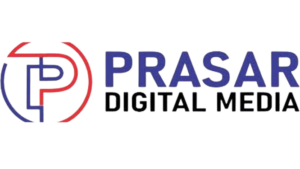Lead Generation through Bulk Email Marketing
Lead Generation through Bulk Email Marketing is an effective way to reach potential customers, build brand awareness, and generate leads. However, to make this strategy successful and compliant with legal and ethical standards, it requires careful planning, execution, and optimization. Here’s a comprehensive guide:
1. Define Your Objectives
- Clear Goals: Identify what you want to achieve—whether it’s increasing website traffic, capturing emails, scheduling consultations, or driving direct sales.
- Target Audience: Pinpoint your ideal customer profile (demographics, interests, behavior, location).
2. Build a Quality Email List
- Opt-In Lists: Use methods like sign-up forms, gated content (e.g., whitepapers, eBooks), or events to collect email addresses.
- Avoid Buying Lists: Purchased lists often lead to poor engagement and spam complaints, damaging your sender reputation.
3. Choose the Right Tools
- Email Marketing Platforms: Use platforms like Mailchimp, SendGrid, or ActiveCampaign for bulk email sending.
- CRM Integration: Sync with your Customer Relationship Management system for better personalization and tracking.
4. Craft Compelling Email Content
- Subject Lines: Keep them short, engaging, and relevant to encourage opens.
- Personalization: Use the recipient’s name and tailor the content based on their preferences or behavior.
- Value Proposition: Offer something valuable—exclusive deals, insights, or solutions to their problems.
- Call-to-Action (CTA): Include a clear, concise, and compelling CTA, like “Learn More,” “Sign Up,” or “Download Now.”
- Design: Use visually appealing templates optimized for mobile devices.
5. Segment Your Audience
- Group your email list by demographics, interests, or behavior (e.g., past purchases, website visits) to send relevant messages.
6. Optimize Email Delivery
- Timing: Send emails when your audience is most likely to engage (e.g., weekday mornings for professionals).
- Frequency: Avoid spamming; balance between staying top of mind and not overwhelming recipients.
7. Ensure Compliance
- GDPR & CAN-SPAM: Adhere to regulations by obtaining explicit consent, including an unsubscribe option, and avoiding misleading subject lines.
- Privacy Policy: Clearly state how you’ll use the recipient’s information.
8. Track and Analyze Performance
- Metrics: Monitor open rates, click-through rates (CTR), bounce rates, and conversion rates.
- A/B Testing: Experiment with different subject lines, CTAs, and content styles to identify what resonates best.
- Feedback Loop: Adjust your strategy based on data insights and user feedback.
9. Follow-Up
- Automated Campaigns: Set up drip campaigns or follow-up emails for leads who didn’t convert immediately.
- Human Touch: For high-value leads, follow up with a personalized email or call.
10. Continuous Improvement
- Keep refining your list, content, and strategy based on market trends and performance analytics.
Key Tips for Success
- Focus on Quality Over Quantity: Engaged and relevant recipients are more valuable than large, inactive lists.
- Avoid Spam Triggers: Words like “FREE!!!” or excessive use of caps and exclamation marks can lead to spam folder placement.
- Provide Value Consistently: Always offer something meaningful to the recipient to foster trust and loyalty.
Would you like assistance with a specific part of this strategy, such as creating email templates, setting up automation, or ensuring compliance?
